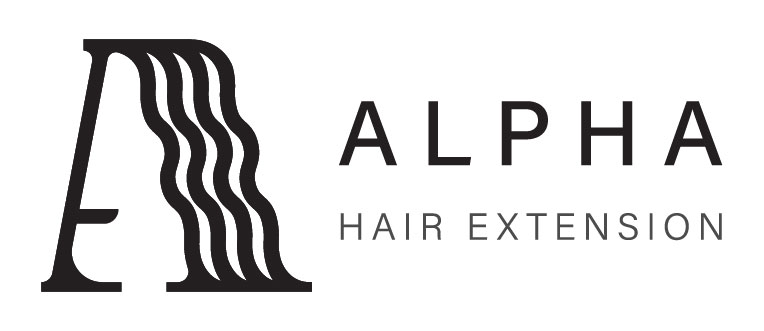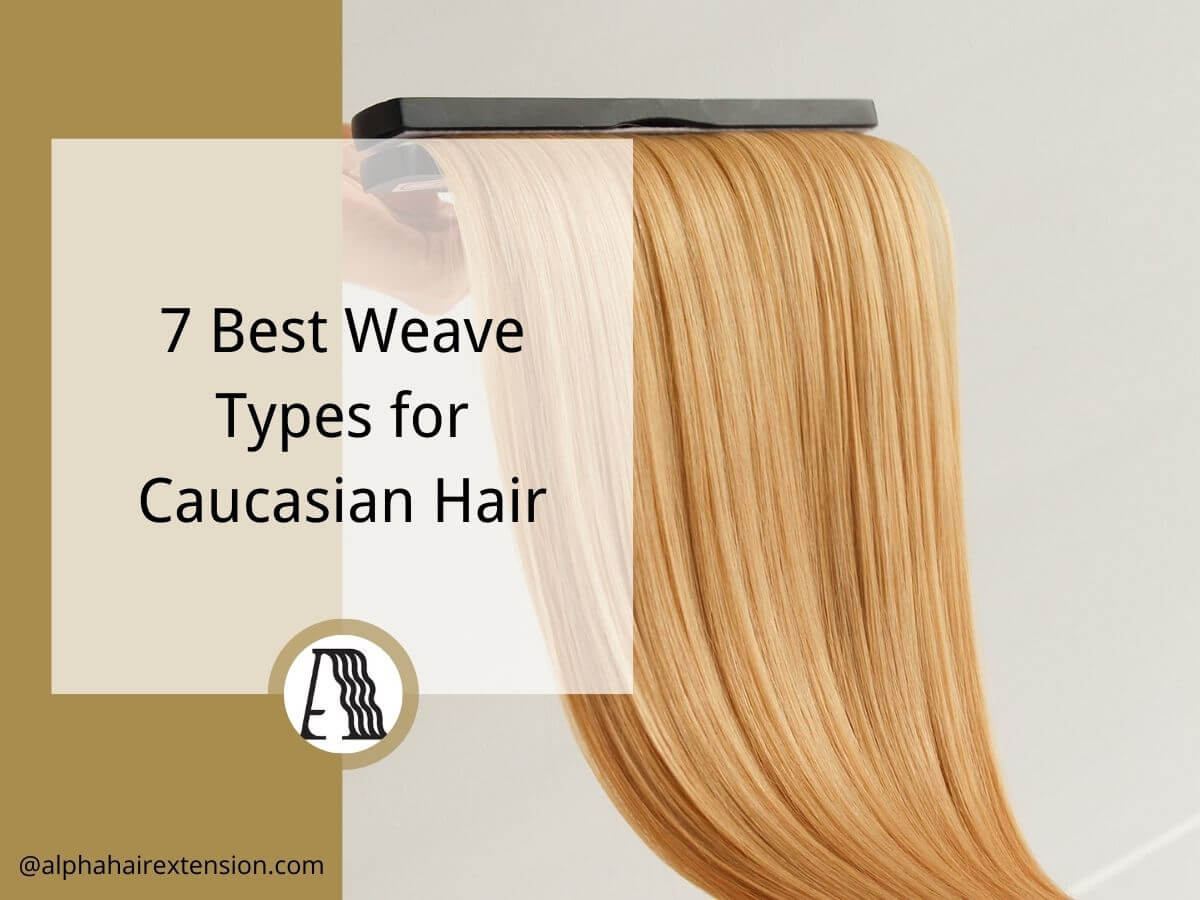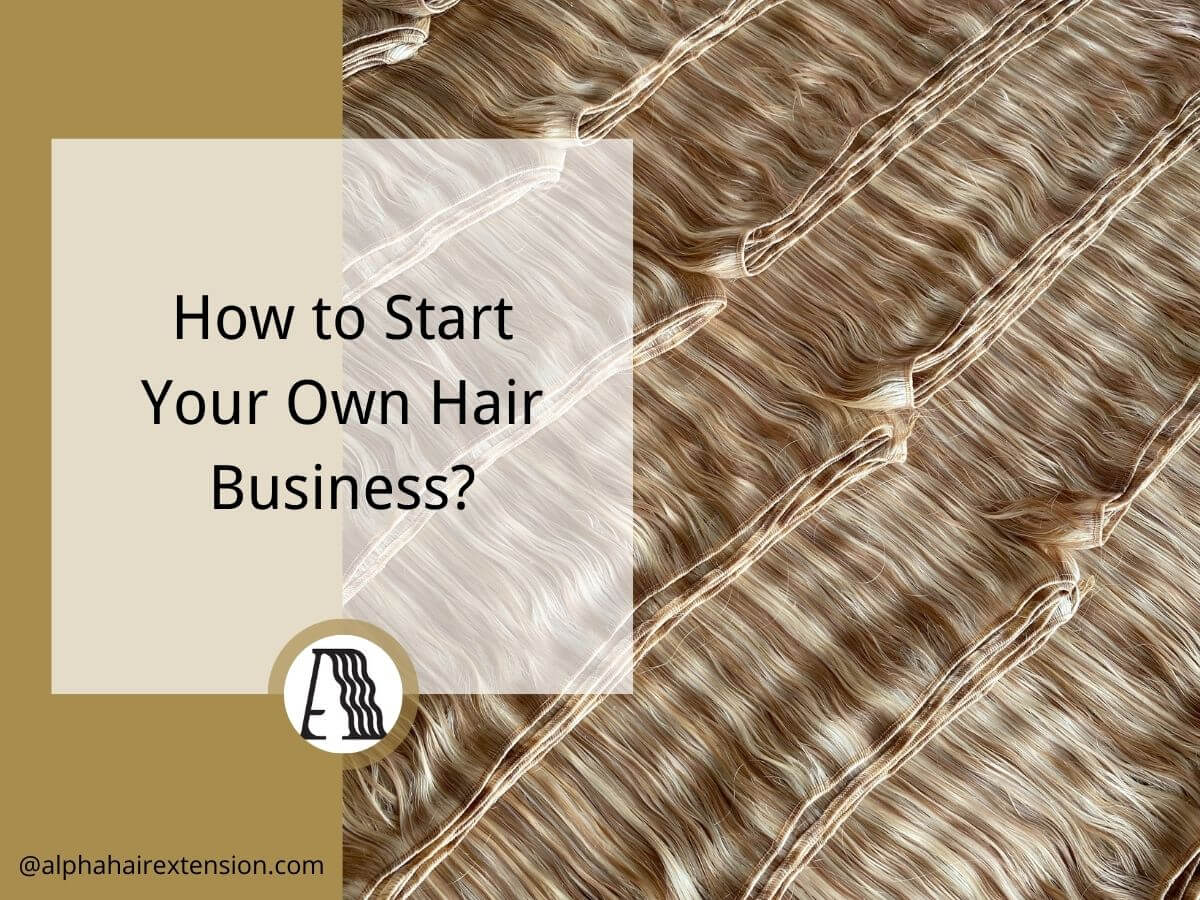I still remember my first client with fine, straight hair.
She sat in my chair, hopeful but nervous. The last sew-in she tried was bulky, itchy, and nothing like her real hair.
Back then, I was just starting out—learning the ins and outs of extensions through trial and error. I made mistakes.
Over time, I started testing products, working with suppliers, and comparing results across different installs. I saw which extensions blended in, which held up—and which fell short.
This guide comes from that hands-on experience. You’ll get a clear breakdown of 6 sew-in extension types that work well for Caucasian hair—both in appearance and performance.
By the end, you’ll know what sets them apart, and which ones are worth trusting.
So let’s get down to it!
1. Genius Weft
I still remember the first time I used a Genius Weft.
It looked too thin to be strong. I had doubts. But once I stitched it in, I was surprised. It laid flat. No bulk. No stiffness. Just a smooth, natural look that moved like real hair.
If you’ve worked with fine or straight textures, you know how hard it is to find a sew-in that blends well. Genius Weft solves that problem.
Key Benefits
- No return hair: Regular machine wefts have short, folded strands that stick out and cause itching. Genius Wefts removes that extra bulk, making the install feel smooth and irritation-free.
- Can be cut anywhere without fraying: Most wefts unravel if you trim them. Genius Weft stays intact, so you can cut it to fit without worry. This makes it great for custom installs and tricky head shapes.
- Lightweight and flexible: The weft feels thin and soft, almost like fabric. It bends easily and lays flat against the scalp, which helps it blend naturally—especially on fine or straight hair.
- Seamless look and feel: Because it’s so flat, it’s hard to detect once sewn in. It moves with the hair and doesn’t add bulk or weight.
Pros and Cons
Pros:
- Lays flat against the scalp
- Great for fine or straight hair
- Comfortable to wear long-term
- Easy to customize
Cons:
- Costs more than standard wefts
- Too thin for high-density installs
- Needs gentle stitching—no rushing
Best For
Genius Wefts are best for fine to medium-density hair. They add volume without feeling bulky or heavy. Ideal if you want a natural, seamless look that holds up through daily wear.
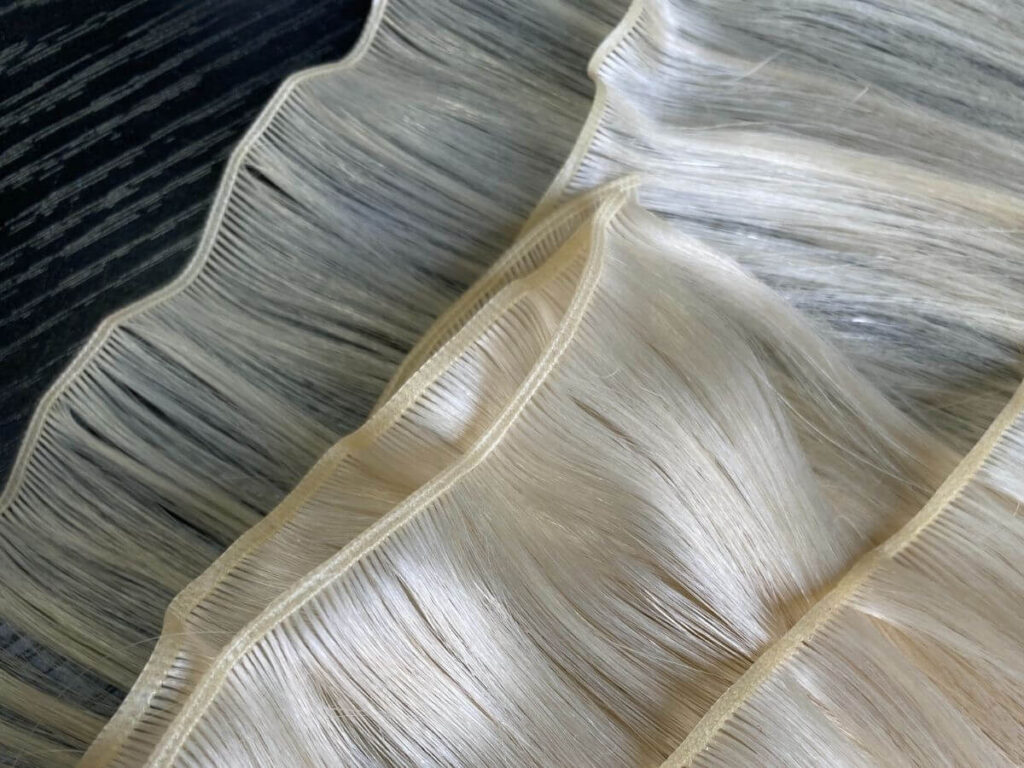
2. Hand-Tied Strips
Hand-tied strips were one of the first sew-in methods I learned to work with.
The install took time—each strip had to be sewn in with care. But the result was worth every minute. The hair moved naturally, looked real, and felt light on the scalp. The finish was smooth, seamless, and soft to the touch.
If you’ve used thicker wefts that felt bulky or stiff, you’ll notice the difference right away with hand-tied.
These strips are made by tying each hair strand into a thin weft by hand. That process creates a flat, flexible weft that sits close to the scalp and blends easily into natural hair.
Key Benefits
- Soft, flexible structure that moves naturally: Hand-tied wefts are built strand by strand. This gives them a soft, flowy feel that moves with the body. The movement is more natural than most machine-made wefts.
- Perfect for layering and stackin: Because they’re so thin, you can layer multiple wefts without bulk. That’s great if you want to create depth, fullness, or add custom highlights.
- Flat finishes with zero tension: The base lies flat against the scalp, helping avoid that tight or pulling feeling. It’s a gentle option, especially for those with sensitive scalps.
Pros and Cons
Pros
- Ideal for layering and adding soft volume
- Comfortable for people with sensitive scalps
- Looks natural in motion, even under bright lights or wind
Cons
- Cannot be cut freely—cutting causes the weft to unravel
- Takes more time to install compared to machine-made wefts
- Requires more precision and experience during the sew-in
Still, the results speak for themselves. The final look is lightweight, beautiful, and real.
Best For
Hand-tied strips are best for fine to medium-density hair. They’re ideal if you want a layered, flowing style with movement. They’re also a good choice if you want something soft that won’t irritate your scalp.
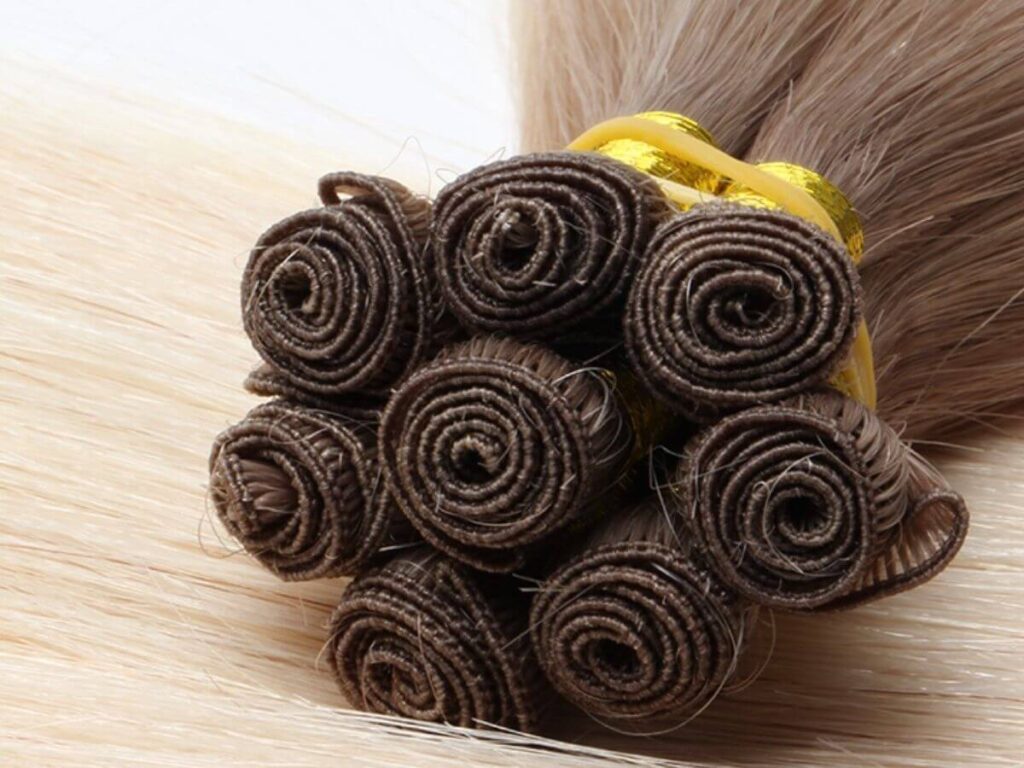
3. Skin Sew-In Extensions
Some installs need more than just volume. They need to look invisible.
That’s when I turn to skin sew-in extensions. The first time I used them, I was working on a client with a high hairline and thin crown. She wanted to part her hair in the middle without any weft showing through. Regular wefts weren’t cutting it. Skin wefts were fixed.
These wefts have a flat, clear base that looks like real skin. When stitched close to the scalp, they seem to vanish. That’s what makes them different.
I’ve used them in photoshoots and on clients who wear sleek styles or deep parts. They hold up well under pressure and don’t shift easily.
Key Benefits
- Clear, skin-like base: The base is thin, flat, and slightly transparent. It blends into the scalp, making it hard to spot—especially up close.
- Perfect for front sections and part lines: Need a natural-looking hairline or a clean middle part? Skin wefts sit close to the head and don’t show through.
- Discreet and low-profile: These are made for moments where appearance matters. If you’re worried about someone spotting your tracks, this weft offers peace of mind.
Pros and Cons
Pros:
- Looks extremely natural
- Comfortable and flat against the scalp
- Great for detail work—edges, parts, and crown coverage
Cons:
- Not as breathable as hand-tied or genius wefts
- Can trap heat or feel sticky in warmer climates
- Needs extra care during removal to avoid damaging the thin base
They’re not made for full-head installs—but they weren’t meant to be. They’re a precision tool, not a bulk solution.
Best For
Skin sew-in extensions work best for the top, front, or part lines where visibility is a concern. I always recommend them for clients who wear their hair up, down the middle, or pushed behind the ears.
Ever worry about tracks showing through in bright light or tight styles? This might be the quiet solution you didn’t know you needed.
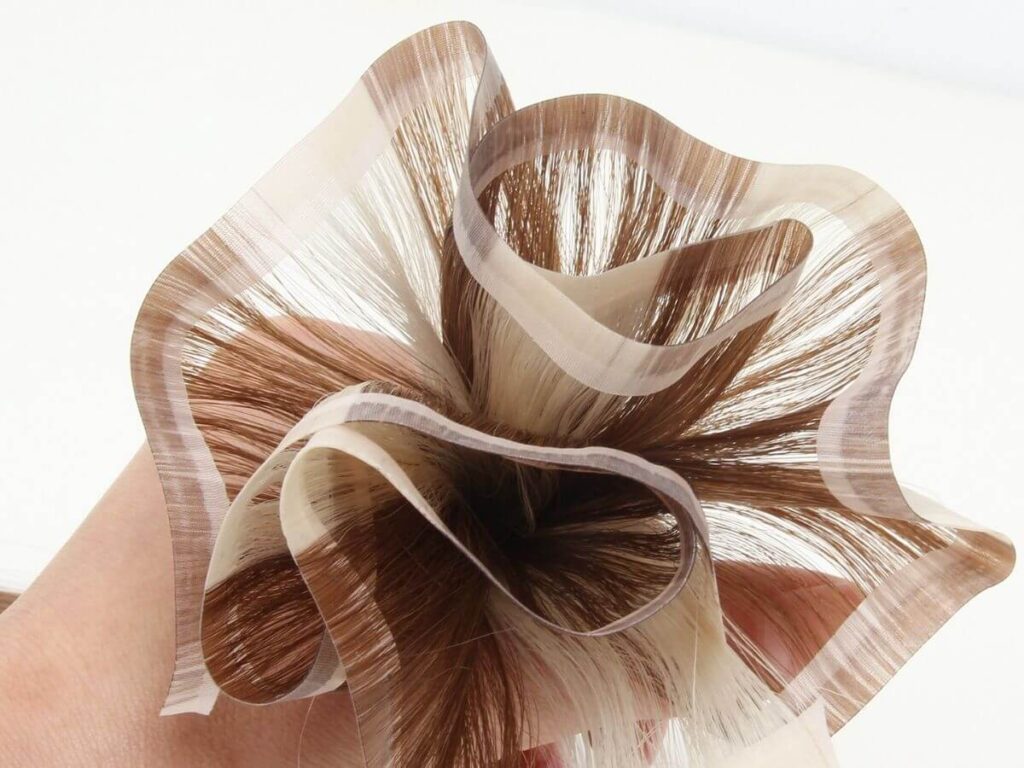
4. Virgin European Hair (Sew-In Ready)
“Is this even extensions?”
That’s what one of my clients asked after I finished her sew-in using virgin European hair. She had soft, medium-blonde hair and was tired of extensions that felt too dark or too coarse. This time was different. The match was so good, even she couldn’t tell where her hair ended and the weft began.
Virgin European hair is special. I’ve used this hair on clients who wear extensions daily and want something they can style, color, and re-wear for months. It holds up beautifully with proper care.
It hasn’t been dyed, bleached, or stripped. The cuticle is still intact, and the hair is collected from a single donor. That means better quality, more strength, and a silkier feel from root to tip.
When it’s labeled “sew-in ready,” it means the weft is pre-stitched and ready to install—no extra prep needed.
Key Benefits
- Matches natural tones of ash and soft blondes: Many blondes have trouble finding hair that doesn’t turn orange or brassy. Virgin European hair blends well with cool and medium shades.
- Silky texture with light body: It’s smooth but not too slippery. It holds shape without needing heavy product.
- Long-lasting color and hold: Since it’s minimally processed, it takes color well and holds curl longer. That’s great for clients who switch styles often.
Pros and Cons
Pros:
- Soft, natural texture that blends easily
- Perfect for ash, golden, or medium blondes
- Holds curls and waves for longer periods
Cons:
- Costs more than processed hair
- Harder to source in large volumes
- May have slight variations in shade between batches
Best For
Virgin European hair works best for clients with light, fine textures—especially ash blondes or soft browns. It’s ideal if you want high-end results that feel and look just like real hair.

5. Slavic Hair (Sew-In Ready)
I once had a client whisper, “Please don’t use anything too heavy. My scalp can’t handle it.”
She had fine, fragile hair and had given up on sew-ins after one bad experience.
That’s when I reached for Slavic hair. And to this day, it’s one of my go-to picks for clients who need something soft, light, and truly natural-looking.
Slavic hair comes from Eastern Europe and is known for its fine texture. It’s often virgin or lightly processed, so the strands stay soft and strong. When labeled sew-in ready, it means it’s already wefted and prepared for stitching—no extra prep work needed.
Key Benefits
- Ultra-fine strands: This hair is thinner than most. It blends easily with naturally light or delicate hair types. Great for people who don’t want to feel the wefts on their scalp.
- Smooth root-to-tip transitions: No harsh breaks, no sudden changes in thickness. The weft flows evenly, which makes styling look clean and polished.
- Gentle on sensitive scalps: Because it’s so light, Slavic hair doesn’t pull or tug. It’s ideal for people who have had irritation or headaches from heavier wefts.
Pros and Cons
Pros:
- Feels soft, light, and breathable
- Blends beautifully with fine, straight hair
- Can be styled without heavy product
Cons:
- Higher price point due to limited supply
- Not ideal for thick or high-volume looks
- May vary slightly in shade or texture batch to batch
Still, for clients with delicate hair, this is often the best match available.
Best For
Slavic hair is best for fine, straight, or low-density hair types. It supports soft styles without adding bulk or weight. A great option for those who want a light, natural feel with a seamless finish.
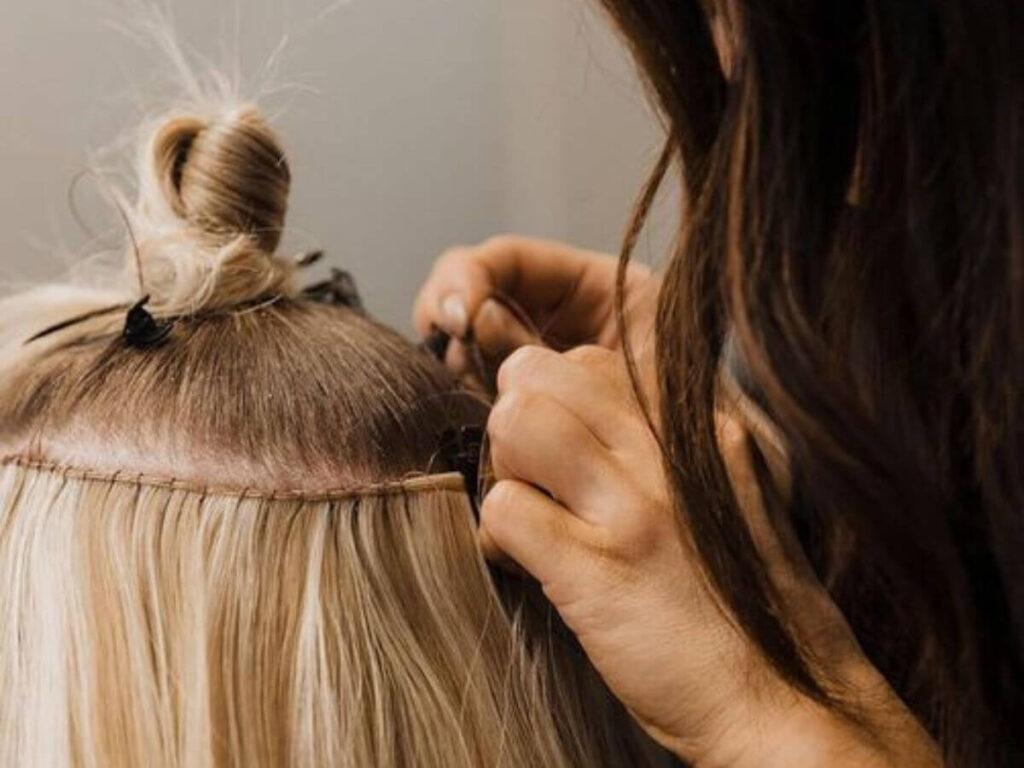
6. Custom-Colored Sew-In Extensions
I used to spend hours in the back of the salon toning extensions. Mixing formulas. Rinsing. Hoping the final shade would match.
Sometimes it worked. Other times, I had to start over.
Then I tried custom-colored sew-in extensions—and it changed everything.
These wefts come pre-dyed to match specific shades. Most are based on popular European color charts—think ash blondes, beige tones, and soft browns. Instead of lifting and toning raw hair, the color’s already there, ready to install.
Key Benefits
- Pre-toned to trending European shades: From icy blondes to warm neutrals, these wefts are made to match modern, in-demand colors. You don’t have to tone them unless you want to tweak.
- Reliable shade matching: Whether you’re ordering once or placing a bulk restock, the color stays consistent. That means fewer surprises—and less stress.
- Speeds up installs: You skip the coloring process completely. That saves time for you and keeps your schedule moving.
Pros and Cons
Pros:
- Saves time and reduces salon work
- Perfect match for popular color trends
- Easy to blend and layer for dimension
Cons:
- More expensive than raw or uncolored wefts
- Limited shades available, especially in small batches
- May still need toning for unique or in-between shades
Best For
Custom-colored sew-in extensions are best for color-focused installs that need speed and precision. They’re ideal for salons that want reliable results without mixing and matching tones manually. Also great for brands that want a uniform look across their product line.
This option works well if you’re tired of guessing games in the back room—and just want to stitch, style, and go.
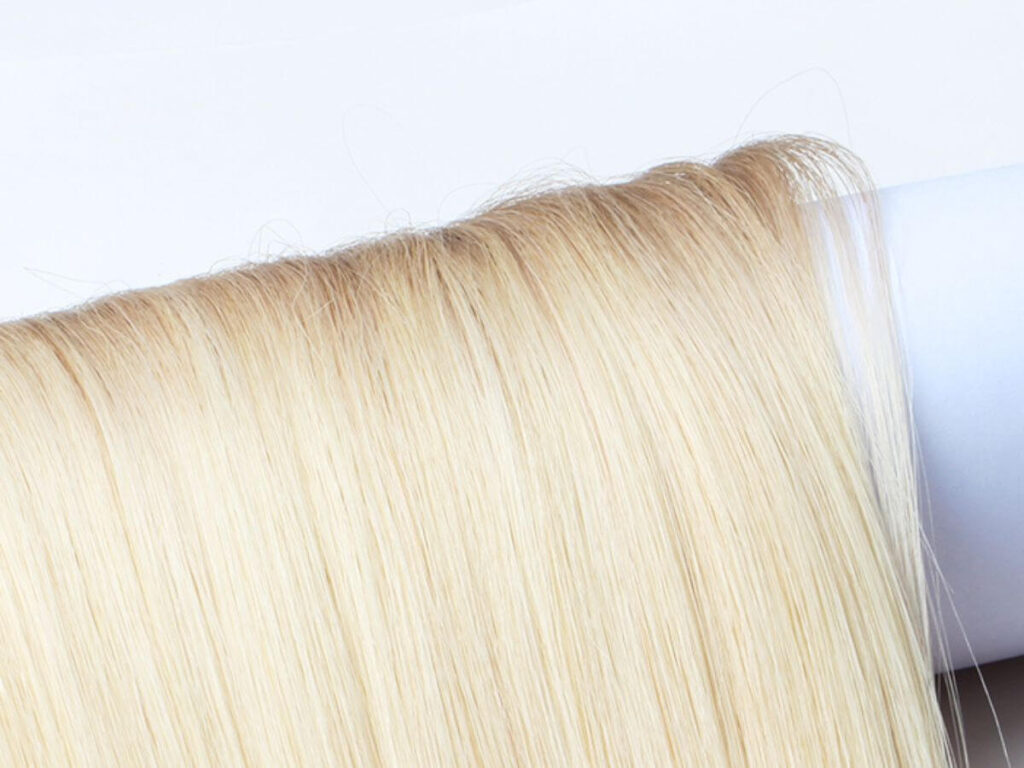
Conclusion
Finding the right sew-in extensions for Caucasian hair can feel overwhelming. But now you’ve got options—real ones.
We broke down 6 trusted types. You’ve seen what they’re good for, what to watch for, and how they perform in real life.
Whether you’re building a product line or upgrading what’s on your shelf, now you know where to start.
That first client I mentioned? She never looked back—and neither will you.
Still have questions? Contact us today.
Explore More Helpful Resources
There’s so much more to discover! Check out our other products and find what fits your needs:
- Pre-bonded Hair Extension
- I-Tip Hair Extension / Stick Tip Hair Extension
- Genius Weft/Flat Weft Extension
If you’re looking for more insights, we’ve put together a list of helpful articles that you might enjoy:
Still haven’t found what you’re looking for? Don’t hesitate to contact us. We’re available around the clock to assist you.
